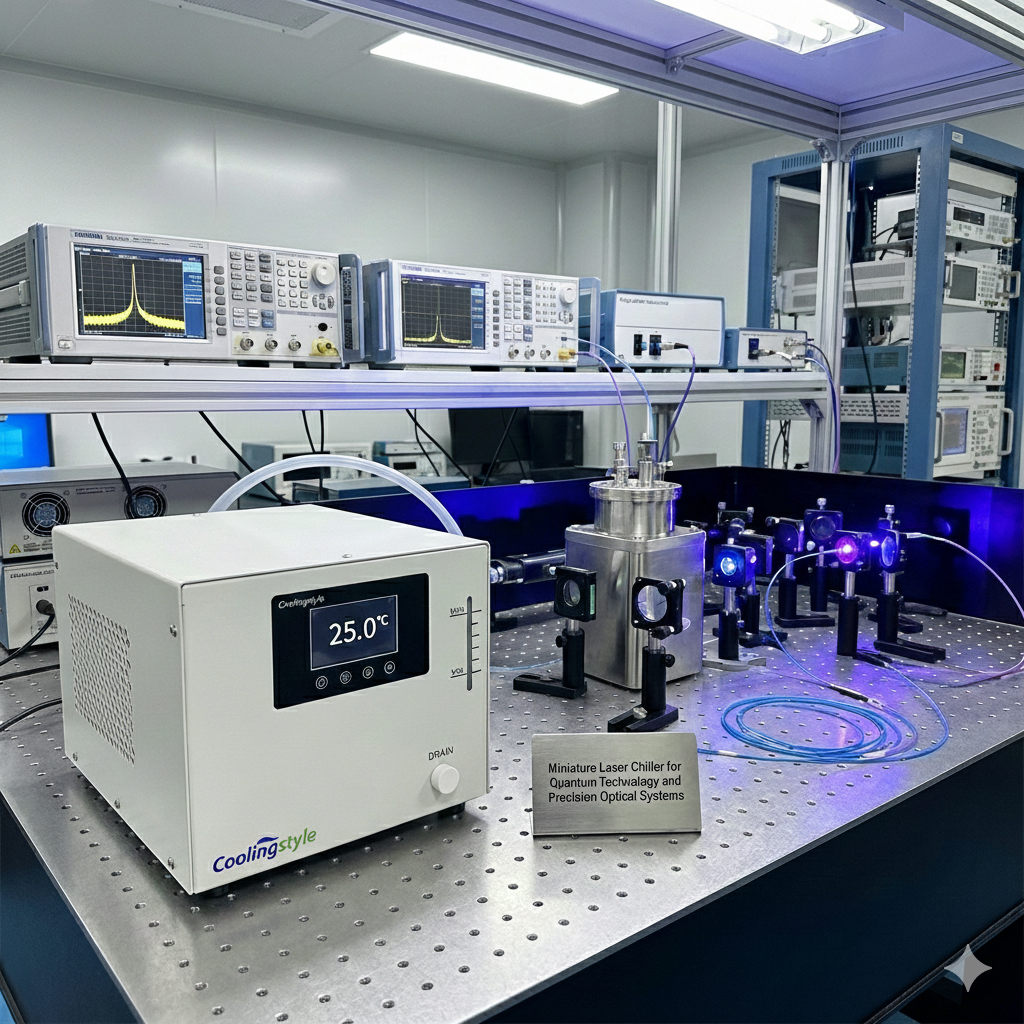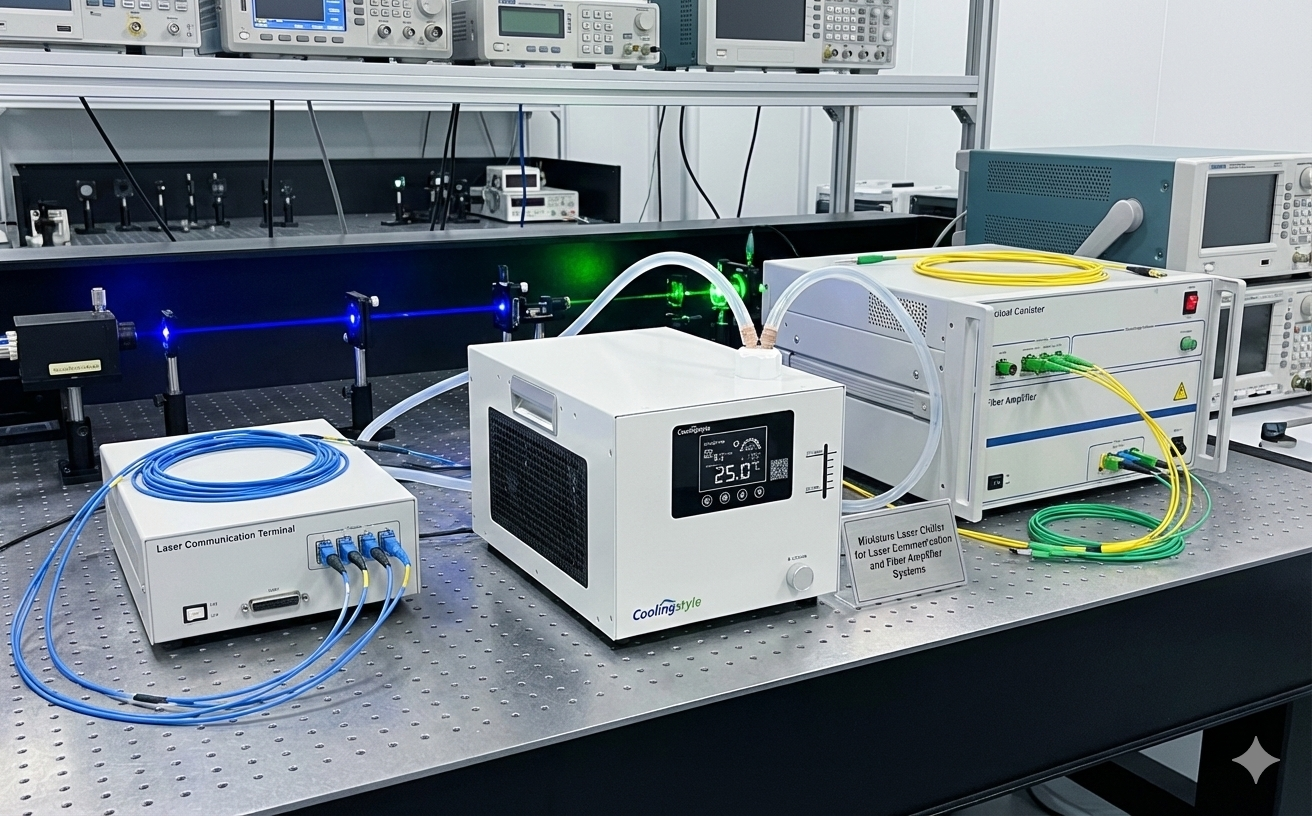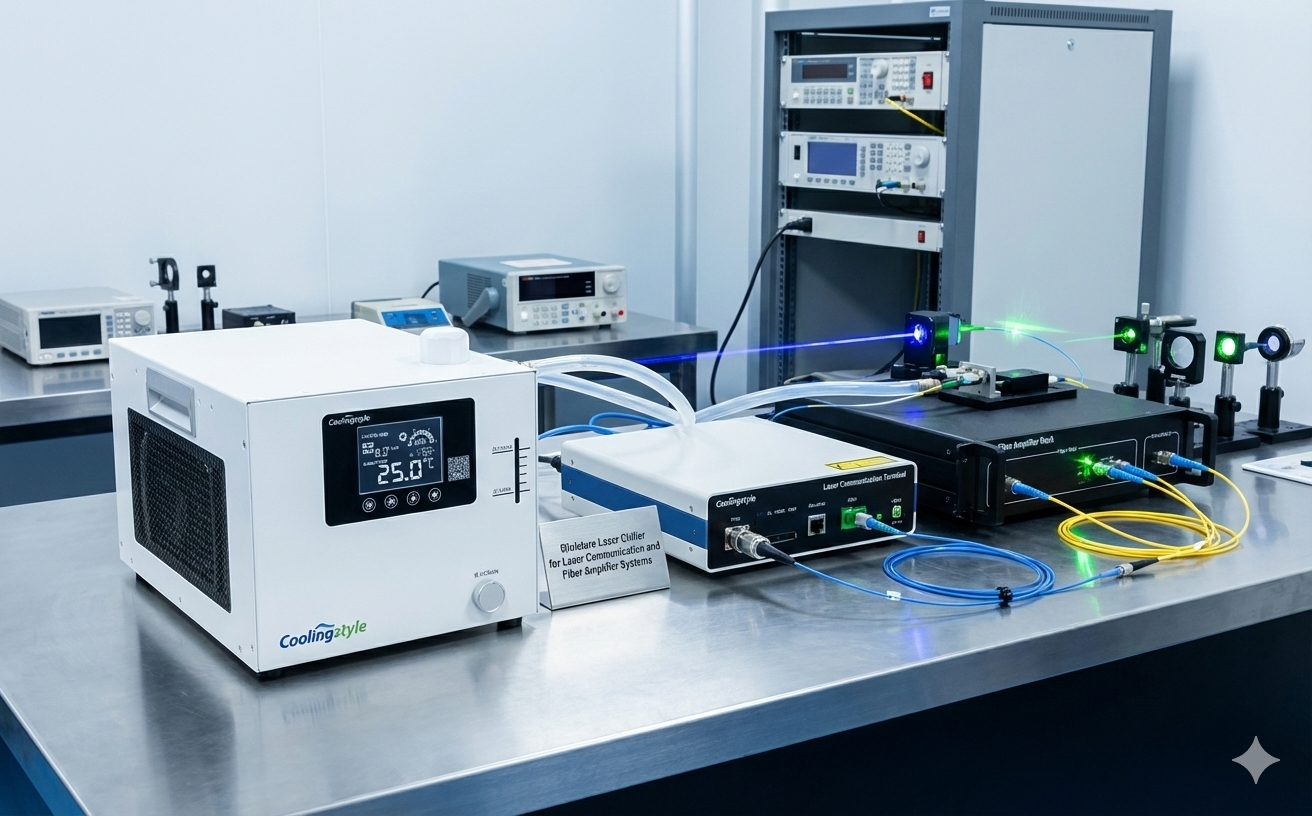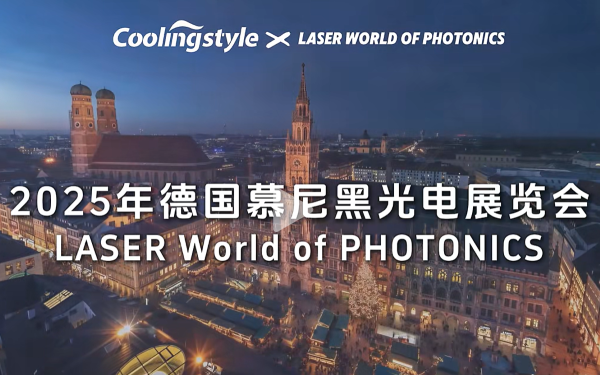355nm UV lasers1 are widely used in material processing, biomedical applications, and spectroscopy. Effective thermal management2 is essential to ensure performance and extend lifespan. Due to environmental temperature variations and chiller aging, it’s crucial to select a chiller with extra capacity. It is generally recommended that the chiller’s cooling capacity3 be at least twice the laser’s heat load to ensure stable operation. This article will guide you on how to calculate the heat load and recommend the best chiller models.

How to Calculate the Heat Load?
Formula
The heat load4 Q of a UV laser is calculated as:
Q=Pelect−P355
Where:
-
Pelect is the electrical power input5 of the laser (in watts, W).
-
P355 is the optical output power6 of the 355nm UV laser (in watts, W).
Manufacturers usually provide both electrical power and optical output power6. If not, you can estimate using typical conversion efficiencies:
| Conversion Stage | Typical Efficiency |
|---|---|
| 808nm Pump Diode Efficiency | 50% |
| Nd:YAG Crystal (808nm→1064nm) | 70% |
| 1064nm→532nm Conversion | 50% |
| 532nm→355nm Conversion | 50% |
| Total Efficiency | ~8.75% |
For example, if the laser’s output power P355 is 10W, the estimated electrical power is:
P_{elect} \approx \frac{P_{355}}{8.75\%} = rac{10}{0.0875} \approx 114.29 W
Q=114.29W−10W=104.29W
How to Choose the Right Chiller?
To ensure stable operation under all conditions, choose a chiller with at least twice the laser’s heat load:
For example, if the heat load is 104.29W, a chiller with at least 208.58W cooling capacity is recommended. Other factors to consider:
-
Environmental Temperature8: High temperatures may increase the heat load, requiring a larger chiller.
-
Chiller Aging9: Cooling efficiency may decline over time, so extra capacity ensures long-term stability.
-
Coolant Flow Rate: The chiller must provide sufficient flow to prevent local overheating.
-
Manufacturer Recommendations: Some laser manufacturers suggest specific chillers—always check official guidelines first.

Recommended Coolingstyle Chillers
Coolingstyle offers various chillers suitable for UV lasers. Here are some recommended models:
| Optical Power P355, W | Estimated Electrical Power Pelect, W | Heat Load Q, W | Recommended Chiller Model |
|---|---|---|---|
| 3W | 34.29W | 31.29W | Coolingstyle Q420 Series10 |
| 10W | 114.29W | 104.29W | Coolingstyle Q580 Series11 |
| 24W | 274.29W | 250.29W | Coolingstyle M160 Series12 |
Q420 Series
Ideal for UV nanosecond lasers up to 10W. Cooling capacity: 420W, temperature control precision: ±0.1°C.
Q580 Series
Suitable for UV nanosecond lasers up to 20W. Cooling capacity: 580W, with RS485 remote control support.
M160 Series
Designed for higher-power lasers or industrial applications. Cooling capacity: 1600W, includes automatic water refill.

Conclusion
When choosing a chiller for a UV laser, calculate the heat load Q13 and select a chiller with at least 2Q cooling capacity. Coolingstyle’s Q420, Q580, and M160 series14 are excellent choices for stable and reliable operation. If you’re unsure which model best suits your needs, contact our technical team for expert advice15!
-
Explore the diverse applications of 355nm UV lasers in various fields, enhancing your understanding of their significance. ↩
-
Learn about effective thermal management strategies to optimize laser performance and longevity. ↩
-
Discover how to accurately assess chiller capacity to ensure optimal cooling for laser systems. ↩
-
Understanding heat load is crucial for optimizing laser performance and efficiency. Explore this link to learn more about its significance. ↩ ↩
-
Calculating electrical power input is essential for determining laser efficiency. This resource will provide valuable insights into the calculation process. ↩
-
Optical output power is a key factor in laser performance. Discover more about its role and how it affects laser applications. ↩ ↩
-
Understanding the cooling capacity formula is crucial for selecting the right chiller for your needs. ↩
-
Exploring this topic will help you understand how temperature impacts chiller efficiency and selection. ↩
-
Learn about chiller aging to ensure long-term stability and efficiency in your cooling system. ↩
-
Explore the Coolingstyle Q420 Series to understand its precision and capacity for UV lasers, ideal for your needs. ↩
-
Discover the Coolingstyle Q580 Series for its advanced features like RS485 control, enhancing your laser cooling efficiency. ↩
-
Learn about the Coolingstyle M160 Series, perfect for high-power lasers and industrial use, ensuring optimal performance. ↩
-
Understanding heat load Q is crucial for selecting the right chiller, ensuring optimal performance and efficiency. ↩
-
Explore the features of these chillers to find the best fit for your UV laser cooling needs. ↩
-
Getting expert advice can help you make an informed decision and choose the right chiller for your application. ↩





